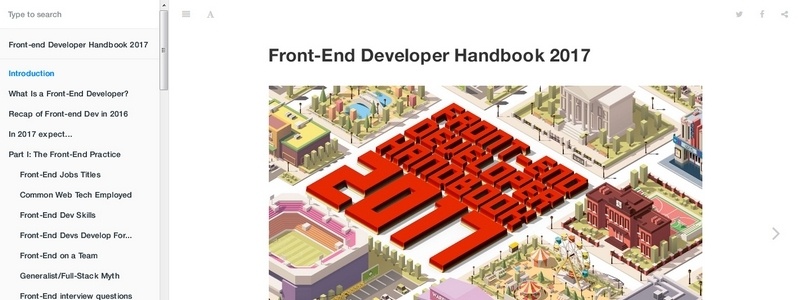
Front-End Developer Handbook 2017

This is a guide that anyone could use to learn about the practice of front-end development. It broadly outlines and discusses the practice of front-end engineering: how to learn it and what tools are used when practicing it in 2017.
It is specifically written with the intention of being a professional resource for potential and currently practicing front-end developers to equip themselves with learning materials and development tools. Secondarily, it can be used by managers, CTOs, instructors, and head hunters to gain insights into the practice of front-end development.
The content of the handbook favors web technologies (HTML, CSS, DOM, and JavaScript) and those solutions that are directly built on top of these open technologies. The materials referenced and discussed in the book are either best in class or the current offering to a problem.
The book should not be considered a comprehensive outline of all resources available to a front-end developer. The value of the book is tied up in a terse, focused, and timely curation of just enough categorical information so as not to overwhelm anyone on any one particular subject matter.
The intention is to release an update to the content yearly.
The handbook is divided into three parts.
- Part I. The Front-End Practice – Part one broadly describes the practice of front-end engineering.
- Part II: Learning Front-End Development – Part two identifies self-directed and direct resources for learning to become a front-end developer.
- Part III: Front-End Development Tools – Part three briefly explains and identifies tools of the trade.










